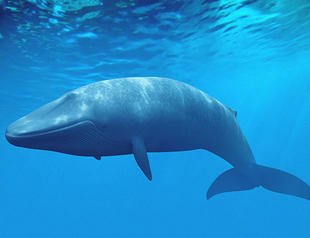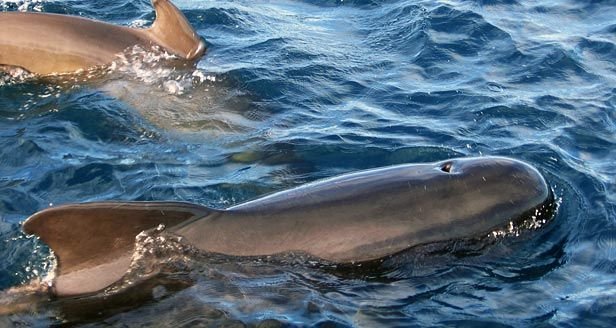BASIC FACTS ABOUT WHALES...

Whales belong to the order cetacea, which includes whales, dolphins and porpoises. Whales are divided into two suborders: baleen and toothed whales. Baleen whales have a comb-like fringe, called a baleen, on the upper jaw, which is used to filter plankton, as well as small fish and crustaceans. They are the largest species of whale. Toothed whales have teeth and prey on fish, squid, other whales and marine mammals. They sense their surrounding environment through echolocation.
Like all mammals, whales breathe air into lungs, are warm-blooded, feed their young milk and have some (although very little) hair. Their bodies resemble the streamlined form of a fish, while the forelimbs or flippers are paddle-shaped. The tail fins, or flukes, enable whales to propel themselves through the water. Most species of whale have a fin on their backs known as a dorsal fin.
Did You Know?
Whales are mammals, and as such, they have hair—though very little of it!
Beneath the skin lies a layer of fat called blubber. It serves as an energy reservoir and also as insulation. Whales breathe through blowholes, located on the top of the head so the animal can remain submerged. Baleen whales have two blowholes,while toothed whales have one.Most whales are quite active in the water. They jump high, or breach, out of the water and land back in the water. They also thrust their tails out of the water and slap the water's surface, which is believed to be a warning of danger nearby. Whales also communicate with each other using lyrical sounds. These sounds are extremely loud depending on the species and can be heard for many miles.
Because of their environment (and unlike many animals) and because they need to breathe air by coming to the water's surface, whales are conscious breathers, meaning they decide when to breathe. All mammals sleep, including whales, but they cannot afford to fall into an unconscious state for too long, since they need to be conscious to break the surface in order to breathe

REPRODUCTION
Mating season: Varies depending on the species.
Gestation: 9-15 months, depending on the species.
Number of offspring: 1 calf.
Nursing time is long (more than one year for many species), which is associated with a strong bond between mother and young. This strategy of reproduction spawns few offspring, but provides each with a high probability of survival in the wild.
THREATS TO WHALES
The effects of climate change will be felt by most marine creatures, and whales are certainly not excluded. Sea level rise and changes in sea temperature will leave whales quite vulnerable, and they may not be able to adapt quickly enough to survive. Arctic and antarctic whale habitat faces a particular threat from climate change. Whale food sources will also face challenges, such as a decline in krill population, which is the main food source for many large whale species.

WHAT DEFENDERS IS DOING TO HELP WHALES
Defenders is currently hard a work on behalf of two highly endangered North American whale species. Learn more about our efforts to save the Cook Inlet beluga whale and the North Atlantic right whale.
Whaling is one of the biggest threats to whales. By the middle of the 20th century, whaling had left many populations severely depleted. The International Whaling Commission introduced a moratorium which continues to this day. However, there are still some exceptions to this moratorium. This allows countries like Norway, Iceland and Japan and the aboriginal communities of Siberia, Alaska and northern Canada to continue their annual whale hunts.
In addition, several species of small whales are caught as bycatch in fisheries for other species. Exposure to contaminants and pollution also threaten whales. Scientists also believe that underwater sonar testing by the navies of various countries leads to whale beachings. Mass whale beachings occur in many species, mostly beaked whales that use echolocation systems for deep diving. Whales are also threatened by climate change because higher water temperatures in the Antarctic Ocean are reducing populations of krill, a small-shrimp-like crustacean that is the main food source for some whale species.